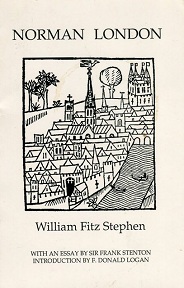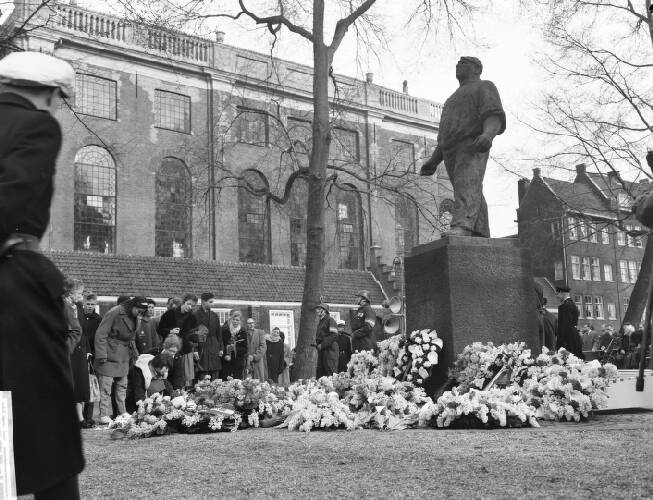This is the only surviving movie footage of her.
history
The grey realist seventies
agata pyzik talks about living in the seventies:
One of the reasons the punk generation reads dystopias like A Clockwork Orange as if they were their lives, and looks longingly towards the communist East in their aesthetics, is their depoliticisation. The generation of their grandparents was the one who survived the war, believed in socialism, was changing the world, joined political parties. Earlier, to piss off your parents, you’d join a communist party. By the 70s, those who wanted to change the world, were discredited and all that had left was the aesthetics.
[…]
If you look at any footage of West Berlin in 70s, you see a murky, sinister city, whose punctum, trauma, is the Wall. People gravitate around it. Living next to a prison, even if theoretically you’e not the prisoner, you can develop symptoms of suffocation. Seeing people regularly being killed over an illegal crossing of the Wall, not being able to walk through your city, imagining what there can be on the other side.
One of the things that defined the seventies, especially the second half of the decade, was the freezing of the Cold War into stalemate. The excitement of the fifties and the sixties, when war between the capitalist and communist blocs seemed just around the corner had ebbed away, Vietnam was just a memory and all that was left were petty little squabbles in Third World countries of no great interest to people in Europe or America. You can see that period reflected in Jerry Pournelle’s mil-sf stories of the period, with their background of a codominiom of the US and USSR ruling the stars for the next couple of centuries.
The late seventies and early eighties before the feverdreams of Reaganomics and yuppism took hold were a time without great dreams, a grey, dour, chilly time where economic depression and political stagnation looked to be permanent.The generation that grew up in the seventies was perhaps the first to really grow up with the Cold War as a constant, something that had always been there and that short of nuclear war would not go away.
And then at the tail end of the seventies there was the Soviet invasion of Afghanistan, the first major crisis in the Cold War since Vietnam and there was a president in the White House, a southern Baptist, who was a ruthless son of a bitch despite his public image, who deliberately set out to create the USSR’s own Vietnam from this invasion. A few years later he would outflanked on the right by another born again Christian and actor, who was even more determined to suckerpunch the Russsians, fed as he was by Team B propaganda about the overwhelming might of the Soviet War Machine. In the USSR meanwhile, the leaders there were well aware of how vulnerable they really were and several times during the early eighties would creep close to starting the inevitable war themselves out of fear of being surprised otherwise.
The realists were in charge during this time and they all agreed that the Third World War was inevitable and that sense of realism is visible throughout popular culture in the late seventies and early eighties. Nihilism and cynicism ruled as we all expected to die in nuclear holocaust anyway. The idea that a youth revolt could avoid this, that the counterculture could offer an alternative had been shown to be false.
Is it this shared experience that paved the way for the neoliberal revolution of the eighties, as nuclear war receded as a threat? Perhaps.
The February strike
On 25 February 1941, less than a year into the nazi occupation of the Netherlands, communist union leaders called for a general strike against the increasing persecution of the Jews. The resulting two day strike in Amsterdam and various other cities in North Holland, the February Strike was the first and only massive public protest against the persecution of the Jews in occupied Europe.
Amsterdam had long been a Jewish city, with a large Jewish neighbourhood in the centre and south of the city. Even before the Germans had conquered Holland, there had been clashes between Jewish people and sympathisers against the indigeneous Dutch fascists of the NSB, the National-Socialist Movement. After the occupation the latter became bolder and started systematically harassing Jewish Amsterdammers, who in turn defended themselves, often with the help of their non-Jewish neighbours and friends. This culminated in a street battle at Waterlooplein on 11 February, when a group of NSB thugs attacking Jewish owned businesses were themselves attacked by a communist strike team of Jewish and non-Jewish residents. As the smoke cleared, one NSB man was left mortally wounded, who died on the 14th.
This incident, as well as similar one when the German SD tried to raid a Jewish-owned icecream parlor and got their asses kicked, was the excuse the nazis needed to institute the first razzias, driving together several hundred Jewish men, beating and torturing them, before sending them off to the concentration camps. This razzia took place on February 23-24, with the communist appeal for a general strike following the next morning.
Though the strike in the end was largely futile, it did serve to rip the mask off the nazi occupier. After its brutal repression it was no longer possible to believe things could continue as usual. In Amsterdam the strike is still remembered each year with a march past the Dokwerker, the statue created in remembrance of the strike in 1951, located on the Jonas Daniel Meijerplein, a centre of the old Jewish neighbourhood.
What makes the Februarystrike special is not just that it was such a public act of resistance, but that it was organised by the Dutch communist party and the communist aligned union, at a time when Nazi Germany and the USSR were still nominally allies. It was also one of the few public acts of resistance in the Netherlands, where the majority of the population not unnaturally just tried to keep their head down, while unfortunately the civil administration and bureaucracy went much to far along in their normal patterns of obedience to authority, even when in service to evil. It’s a proud moment for the Dutch left, one of those times when it took a principled stand, even if an ultimately futile stand, where it led the ordinary people of Amsterdam in, even if for just two days, resisting the deportation of their Jewish neighbours.
Eric Hobsbawm 1917 – 2012
Unlike some others, Hobsbawm achieved this wider recognition without in any major way revolting against either Marxism or Marx. In his 94th year he published How to Change the World, a vigorous defence of Marx’s continuing relevance in the aftermath of the banking collapse of 2008-10. What is more, he achieved his culminating reputation at a time when the socialist ideas and projects that animated so much of his writing for well over half a century were in historic disarray, and worse – as he himself was always unflinchingly aware.
In a profession notorious for microscopic preoccupations, few historians have ever commanded such a wide field in such detail or with such authority. To the last, Hobsbawm considered himself to be essentially a 19th-century historian, but his sense of that and other centuries was both unprecedentedly broad and unusually cosmopolitan.
The sheer scope of his interest in the past, and his exceptional command of what he knew, continued to humble many, most of all in the four-volume Age of… series, in which he distilled the history of the capitalist world from 1789 to 1991. “Hobsbawm’s capacity to store and retrieve detail has now reached a scale normally approached only by large archives with big staffs,” wrote Neal Ascherson. Both in his knowledge of historic detail and in his extraordinary powers of synthesis, so well displayed in that four-volume project, he was unrivalled.
Of all 20th century Marxist and Marxist influenced historians, Hobsbawm has been perhaps the most influential, especially in the English speaking world. For me he was one of the historians I started to discover and read when I had become a socialist, back in 2001/2002, somebody who was capable of showing the grand sweep of history without losing sight of its foundations.
James at Blood & Treasure always found Hobsbawm slightly off putting for his continued support of the Communist Party long after most people had abandoned it, as well as being a bit cavalier about the suffering actually existing communism perpetuated. For me, that was largely irrelevant, coming to him long after the USSR had ceased to exist, but also because Hobsbawm really didn’t have all that influence outside of his historical work and that was always solid.
Norman London — William Fitz Stephen

Norman London
William Fitz Stephen
109 pages including index
published in 1990
Now here’s an interesting little booklet. The meat of it consists on a treatise on Norman London, originally written by one William Fitz Stephen for his Life of Thomas Beckett, sometime before 1183. It’s therefore as close an eyewitness account of Norman London as we could ever get. Though interesting, this in itself is not enough to make a book of course. It is therefore partnered by another, more modern essay on the city, written in 1934 by Frank M. Stenton, a renowned historian of Anglo-Saxon England. These two pieces combined from the basis for what’s perhaps the most useful feature of the book, the maps of Norman London at the back of it.
There’s not really much more to say about Norman London. It’s an informative little booklet, but nothing more than that. What’s more, as the Stenton essay is more than seventy years old, it can’t help but be outdated, as new insights, more archaeological research and new theories will have altered our views of the period. I don’t think this would give a good picture of what we thought the Norman city looked like anymore. But this doesn’t make it worthless, if only because it still includes that eyewitness account of London, one of the few if not the only one we have of London at that particular point in time. The Stenton essay on the other hand is more of interest now for its own inherent historical value than for its accuracy.
